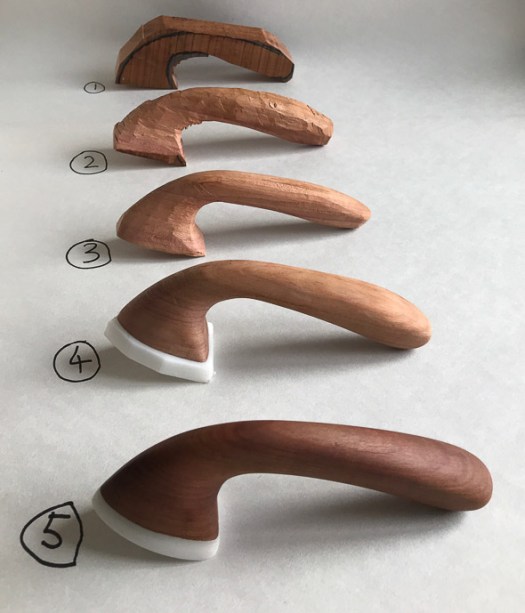
Elissa O’Loughlin
Paper Conservator and Wren Haven Tools
Most paper conservators identify with all things Japanese. This is because we use so many Japanese-made materials and methods in our work. If there was a universal symbol for paper conservators, it would be the noribake or paste brush. This traditional tool is used in conservation for application of paste to linings and for making prepared repair tissues. It has goat hair bristles and is made of Japanese cedar, cherry bark, and cord. The care of these brushes is time consuming—long, careful washing and rinsing plus special drying technique—bristles hanging downwards! The brushes cost between $150 and $300. They are made by craftsmen in Kyoto and in Tokyo. Each city has its own style of handle. Kyoto has a rounded shoulder, but Tokyo’s is angled. Leave it to the Japanese to have different styles! I have had mine for 38 years.
The second tool is a very thin and narrow carbon steel microspatula. Made by Caselli, located in Milan. It is the number 11 Minarette – but don’t go looking for one because they are not made anymore. A colleague in Milan visited the shop only to discover that the one ancient venerable craftsman who was skilled enough to make them had retired. Their larger spatulas are still available and can be worked down to your requirements. Many sad instances of dropped Casellis have resulted in bends or breaks—Not to worry! The steel is wonderful and easily re-worked on a stone or slow rpm grinding wheel. Just don’t get the steel too hot! The picture shows several reworked versions.
Number three must be the bone folder I first got in 1983. It has no special characteristics except for the fact that I scratched the new year into it every year for ten years. Don’t know why I stopped! You probably can’t see the numbers in the picture, but rest assured the blue color was an unfortunate accident … poor old thing!
The fourth tool is a triple-zero Windsor and Newton Series 7 Kolinsky sable brush. No paper conservator can work without this trusty brush used for solubility testing. They are a miracle of craftsmanship!
The fifth tool is a Japanese chop-carving knife. This little knife is made from rectangular stock and is worked down to a puffy blunt-angled edge. It is used to thin paper and to delaminate Japanese papers for mending and filling losses and tears. The handle is wrapped in silk. They are hard to find any more.
I have always been particularly protective of my tools, but I won’t hesitate to put one into your hands for you to learn by. This surprises many students – but how else can the tool and its potentials be felt? Luckily, as a conservator, the students I’ve taught are overwhelmingly respectful and careful.
Woe be to the abuser of tools!




